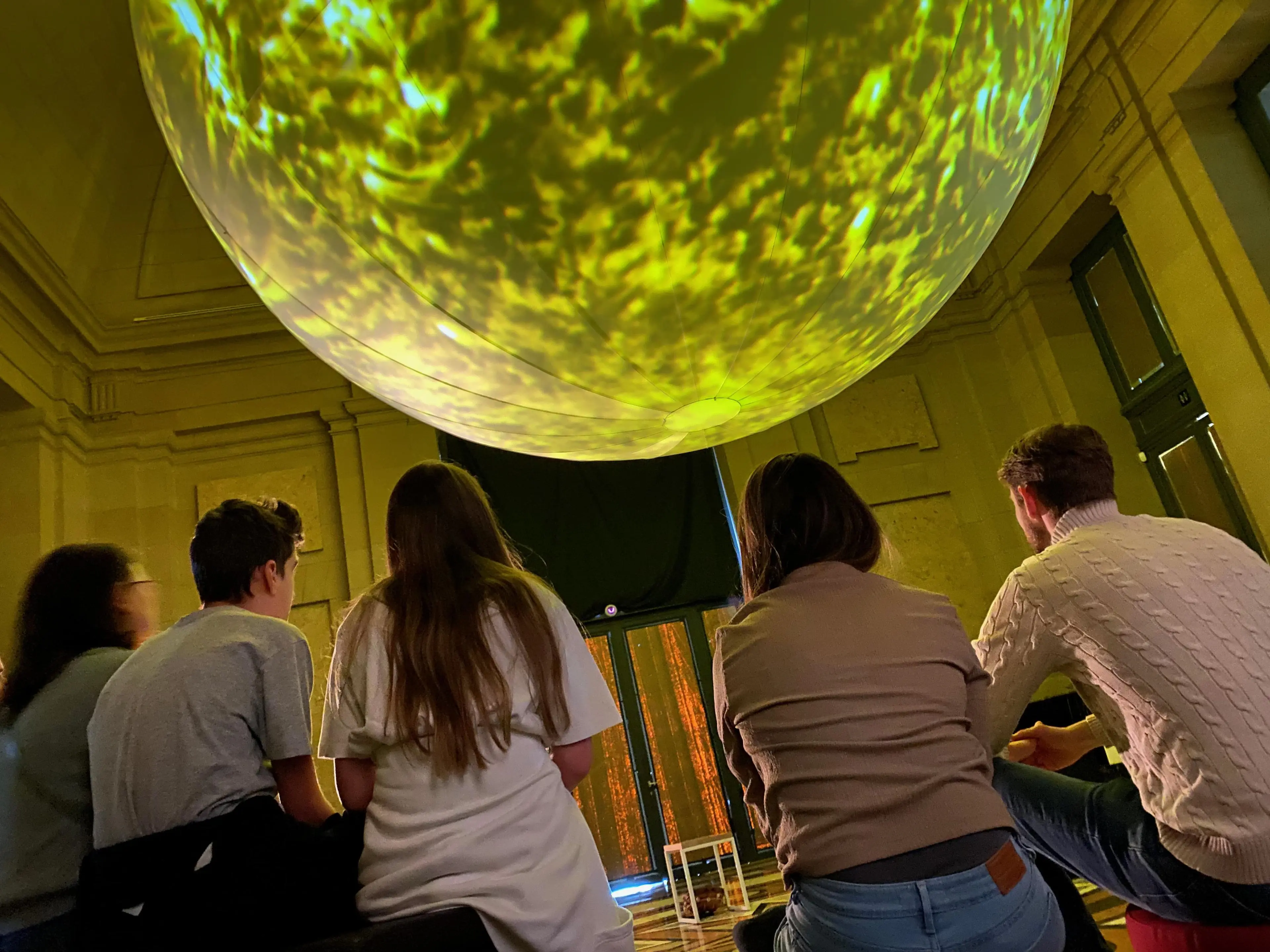‘‘SUN’’ is a touring art and science collaboration between Solar Physicist Professor Robert Walsh and British artist Alex Rinsler. The installation is a huge 1:200,000,000 scale representation of our closest star, projecting real Solar data from NASA’s Solar Dynamics Observatory (SDO).
This installation was the result of researchers at the University of Central Lancashire (UCLan) seeking a new way to deliver targeted public engagement activities through specific collaborations with artistic practitioners, and actively seeking external funding to develop new science/art experiences for the general public. As UCLan scientists, we are always investigating new ways to engage individuals with our research to increase interest and uptake in Science, Technology, Engineering, Arts & Mathematics [STEAM].
Astronomy and astrophysics are inspirational disciplines that allow for a captivating introduction to a wide range of scientific topics. The worlds of art and science despite sometimes being viewed as polar-opposites are complementary disciplines whose approaches to practice and public engagement can be co-beneficial. Hence, this synergy of science and new cultural and artistic expressions combined as a unique installation of our closest star.
SUN is realised as a seven-metre diameter sphere suspended above the ground, displaying a 3D-projected NASA movie made from real astrophysical data of our nearest star: it is a totally unique presentation of our star in stunning 360° at such a scale.
SUN displays 10 weeks in the life of the actual Sun, sped up to 12.5 minutes of real time. The continually-revolving projection reveals our Sun in extreme ultraviolet (UV) light — a region of the electromagnetic spectrum beyond human sight: this imagery gives the illusion that the suspended sphere itself is rotating. Specialised image enhancement techniques highlight the finer details and texture of our solar neighbour, which would otherwise be lost in poorer resolution.
Cycling through five different wavelengths of UV light every 2.5 minutes, different ‘‘layers’’ of the Sun’s atmosphere are exhibited and each have a unique colour palette to represent the different atmospheric temperature: the cycle begins at the Sun’s photosphere (‘‘surface’’) at a ‘‘cool’’ 4,500 degrees, up through chromospheric layers up to an impossibly-hot 10 million degrees in the Sun’s corona (outer atmosphere) — this layer is mimicked with the use of smoke effects, adding an extra immersive dimension to the piece. SUN truly reveals our star like never before.
The purpose of SUN is to communicate the Sun’s awesome, life-giving power in an accessible way whilst also producing a ‘Wow!’ factor. As an art/science collaboration, our aim is to push the boundary for interpreting and communicating data to be both spectacular and scientifically accurate. We have brought together a multi-disciplinary team and the latest projection technologies to achieve this. SUN is hosted in unique locations that will surprise and challenge each visitor as a dynamic piece of art/science engagement, to transform the viewer’s perception of our closest star. Our ultimate and shared aim is to inspire the next generation of artists and scientists to look to the skies and dream.
About Our Sun
- The Sun is a huge sphere of hydrogen and helium, containing 99.86% of the mass of our entire Solar system. 109 Earth-sized spheres could fit across the Sun’s diameter (1.3 million in its volume), so compared to our SUN artwork our planet would be roughly the size of a tennis ball placed 800 metres away.
- Our Sun is about 150 million kilometres (93 million miles) away from Earth – it takes sunlight 8 minutes to travel from the star to us. When you glance up at the Sun, you are seeing what the star looked like 8 minutes ago.
- The colossal pressures at the heart of the Sun create perfect conditions for thermonuclear fusion to take place. This solar core is the hottest part of the star at an immense 15 million degrees.
- A total of 173,000 terawatts (trillions of watts) of solar energy reaches the Earth continuously, more than 10,000 times the world’s total energy use every second.








